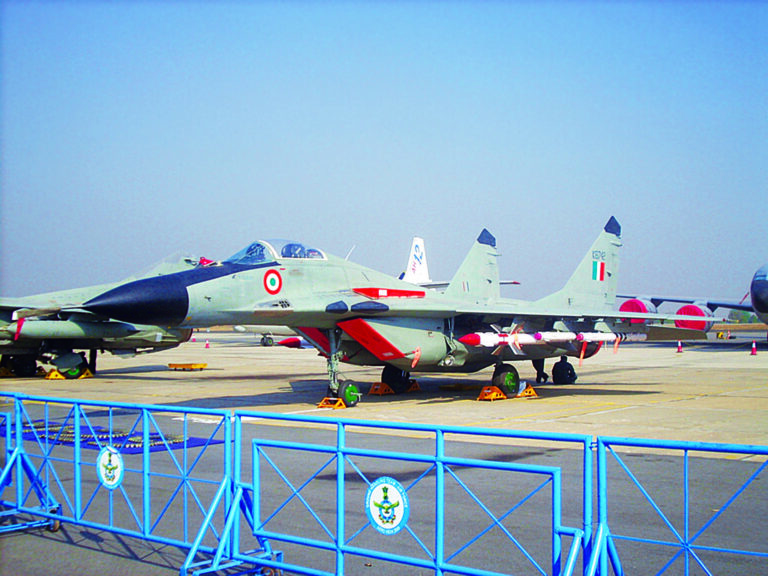The only reason we, the citizens of India, are enjoying our lives without worrying about our security is all thanks to the Indian Army protecting our nation at the border. Fighting terrorism and illegal immigration, risking their lives for us, they are on guard, night and day, come hail or storm.
But how well do we know our Indian army? If we can’t do anything to make their lives better, atleast we can respect and salute them for all their might, isn’t it? The more we know our army, the more pride we’ll have for them.
Hers are 10 reasons why the Indian Army is one of the best in the world:
1. The Siachen glacier is called the highest battlefield on the earth, known for its insane levels of challenges posed by weather and combat where both India and Pakistan have deployed active troops. On the Indian side, spanning almost 38 years, more than 3,00,000 troops of the Indian Army have had Siachen tenures in these Super High Altitudes ranging from 18,000 ft to 21,000 ft above mean sea level. The glacier is approximately 70-km-long flanked by the Soltoro Ridge on the West and the Karakoram Range on the East and extends southwards into the Nubra Valley.

2. India has the second-largest military force with the third-largest defence budget in the world. The Defence Ministry of India manages the Indian armed forces. With the present strength of over 1.4 Million Military personnel, India also has the world’s largest volunteer army.India is among a few countries in the world owning anti-satellite missiles, Anti-ballistic missiles, Submarine-launched ballistic missiles, inter-continental ballistic missile Agni 5 and Cruise missile Brahmos and nuclear capacity. Furthermore, India is equipped with the world’s most advanced fighter jets including SU 30 MKI, Mirage 2000, Rafale, Tejas, Mig etc.

3. The Baily Bridge, we can claim proudly, is the bridge at the highest elevation in the world. This bridge is located in the Himalayan Mountains along the Dras River and Suru River. It is present in the Ladakh Valley. It is 30 meters (98 feet) long and is at an altitude of 5,602 meters (18,379 feet) above the mean sea level.Ironically, it is a bailey bridge. It was built in 1982 by the Indian Army.

4. The last mounted Cavalry regiment of the Indian Army and one of the few in the world, 61 Cavalry.The origins of 61 Cavalry lie in the years immediately after Independence in 1947 when the princely states were amalgamated with India. With the abolishment of these states, it was decided to disband all regular and irregular erstwhile state forces Cavalry units and raise a new “Horse Cavalry Regiment”.Among the Cavalry Regiments that were amalgamated to form the 61st Cavalry, in 1954, were the Gwalior Lancers, Jodhpur/Kachhawa Horse, and Mysore Lancers.With the mechanisation of 61 Cavalry, the President’s Bodyguards (PBG) will be the only horsed element remaining in the Army. The PBG performs ceremonial roles for the President of India.

5. The Indian army has never initiated the first attack or engaged in a military coup to gain power or govern a nation.

6. India has been ranked the fourth most powerful military power in the world. According to the Global Fire Power Index 2017, India’s military strength is second only to that of the US, Russia, and China.

7. The BrahMos is a medium-range supersonic missile that can be launched from submarines, ships, aircraft or land-based platforms. It is considered to be the fastest supersonic missile in the world that can achieve a speed 2.8 times the speed of sound. Considered as the fastest supersonic missile in the world, the land-attack version of BrahMos has the capability of cruising at 2.8 Mach speed and with the upgraded capability, the missile can hit targets at a range of up to 400 kilometers with precision. Advanced versions of the range above 1,000 kilometers and speed up to 5 Mach are said to be under development.

8. It is considered as the one of the largest rescue operations of the Indian armed forces, evacuating civilians affected by the floods in Uttarakhand and Himachal Pradesh which has claimed thousands of lives. The Indian Air Force launched ‘Operation Rahat’ while the Indian Army named ‘Operation Surya Hope’ to massive rescue and relief operations in the hill states of Uttarakhand and Himachal Pradesh where thousands of pilgrims have been stranded in difficult terrain and in hostile weather conditions.

9. High Altitude Warfare School HAWS is a Category A training Institute of the Indian Army. HAWS trains the personnel in Mountain warfare and Ice/Snow Crafting. The School is located at Gulmarg in Jammu & Kashmir. The soldiers posted in Siachen Glacier and other High Altitude Areas are trained in HAWS. The School was established in 1948 as 19th Infantry Division Ski School. In the following years, the school came to be known as High Altitude Warfare School in 1962. The school is also responsible for research activities in the High Altitude Region. In Kargil war, the instructors of HAWS tied the ropes in the heights of Kargil and helped the Infantry soldiers to charge on enemies.

10. Farkhor Air Base is located near the town of Farkhor in Tajikistan. It is 130 km southeast of the capital Dushanbe. It is operated by Indian Air Force in collaboration with the Tajik Air Force. It is India’s first military base overseas.


